|
INSECTS ON BIRCH: EXTERNAL FEEDERS |
||
|
Sawflies (Hymenoptera: Symphyta) External birch feeders occur commonly in the sawfly families Tenthredinidae (especially in the subfamily Nematinae), Argidae, and Cimbicidae. |
||
|
Amauronematus amplus (Hymenoptera: Tenthredinidae) Birches support dozens of nematine sawfly species that belong to many different genera. Larvae of sawflies superficially resemble butterfly and moth caterpillars, but sawfly larvae have 6-7 pairs of abdominal prolegs (behind the three pairs of thoracic legs), whereas lepidopterans have fewer than four pairs. |
 |
|
|
Full-grown larva of Amauronematus amplus on Betula pubescens. |
||
|
Pristiphora alpestris (left) and Amauronematus sp. (right) (Hymenoptera: Tenthredinidae) These species-rich nematine genera contain many birch-associated species. |
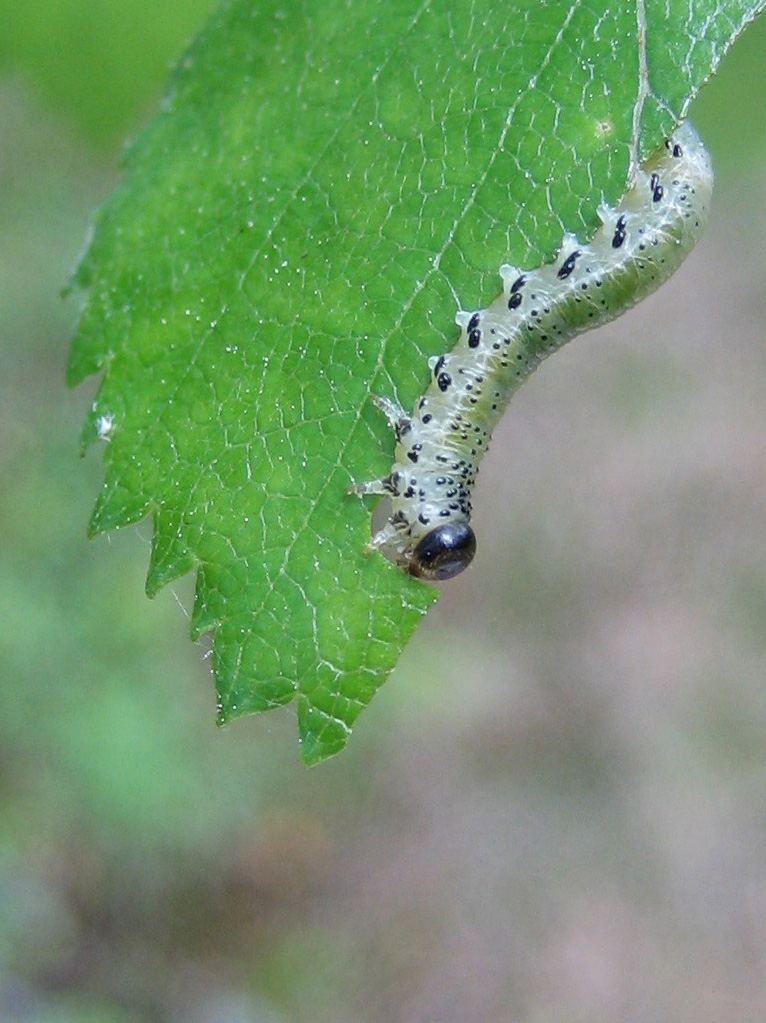 |
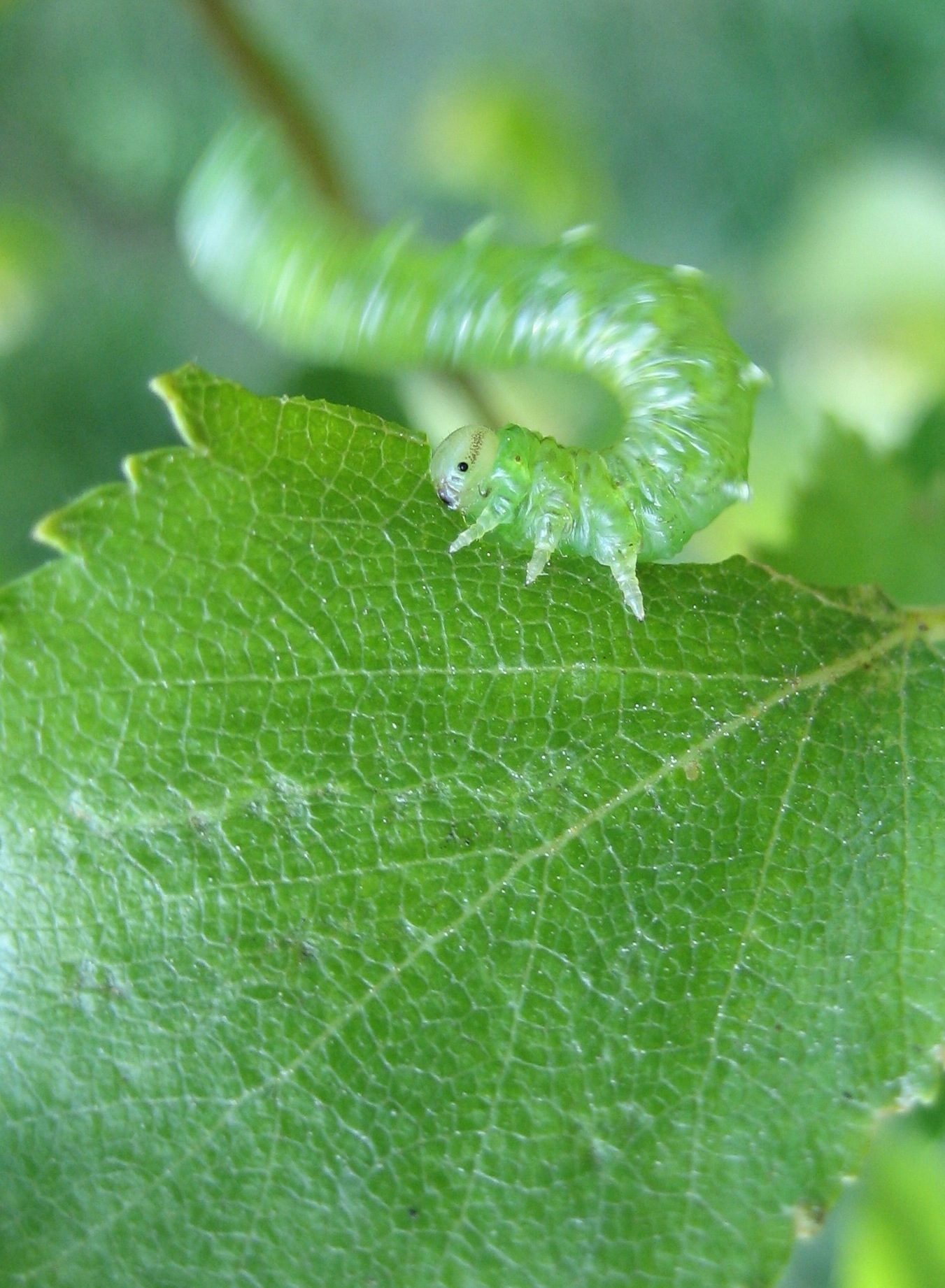 |
|
Larva of Pristiphora alpestris feeding on Betula pubescens. |
Amauronematus sp. larva on Betula pubescens. Note the tail-waving behaviour which is characteristic of nematine larvae when agitated. |
|
|
Hemichroa australis (Hymenoptera: Tenthredinidae) The two Finnish Hemichroa species, H. australis and H. crocea, feed on birch and alder species. Young larvae of both species make characteristic L-shaped holes on leaves, whereas larger larvae feed on leaf edges. Larvae of H. australis have conspicuous black and yellow stripes on the sides, but H. australis larvae have a more uniform colouration. |
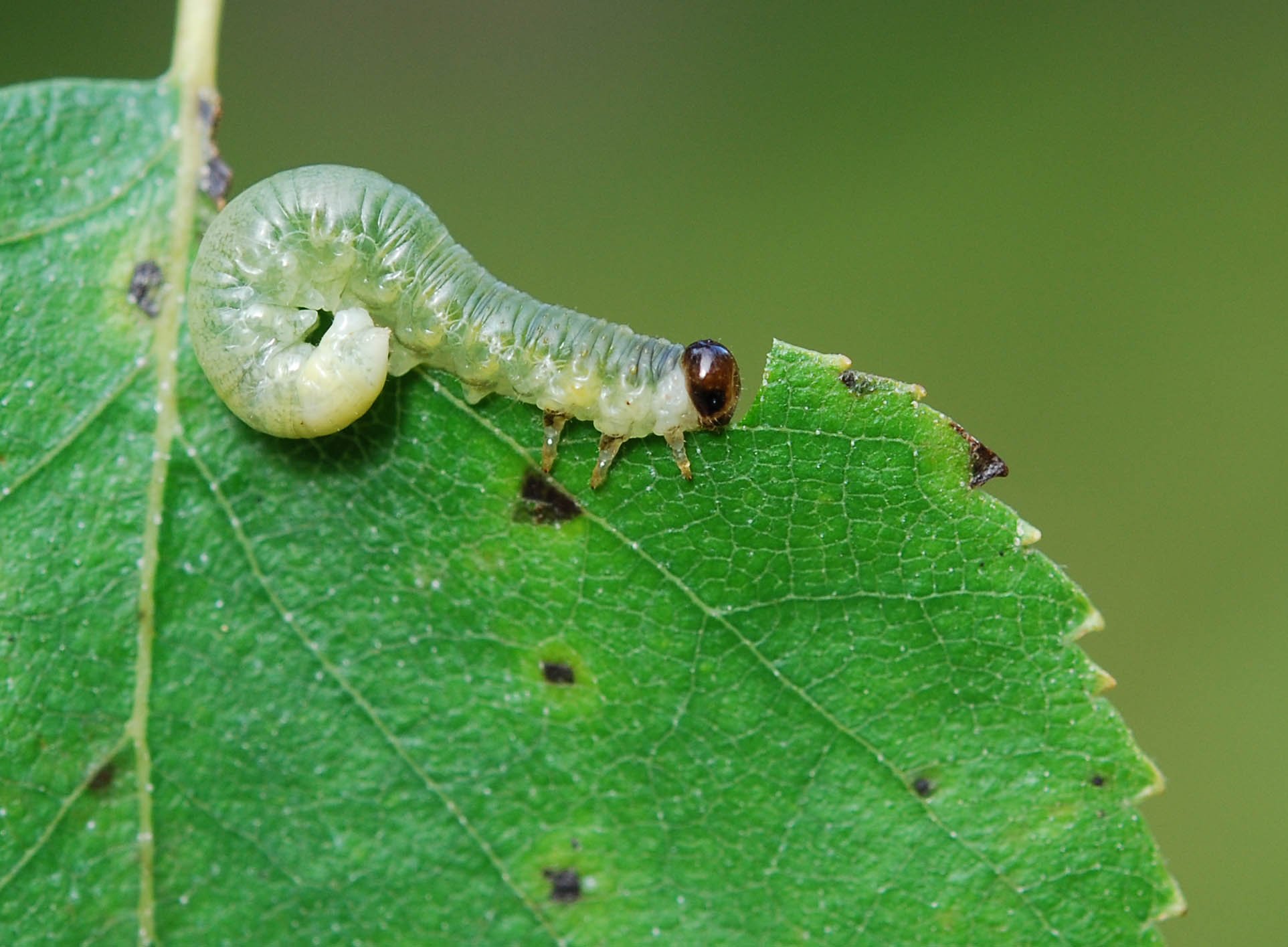 |
|
|
Larva of Hemichroa australis feeding on Betula pubescens. |
||
|
Arge sp. (Hymenoptera: Argidae) A few Arge species feed on birches. Adult argid sawflies can easily be identified on the basis of the antennae, which have only three segments, of which the third is very long. |
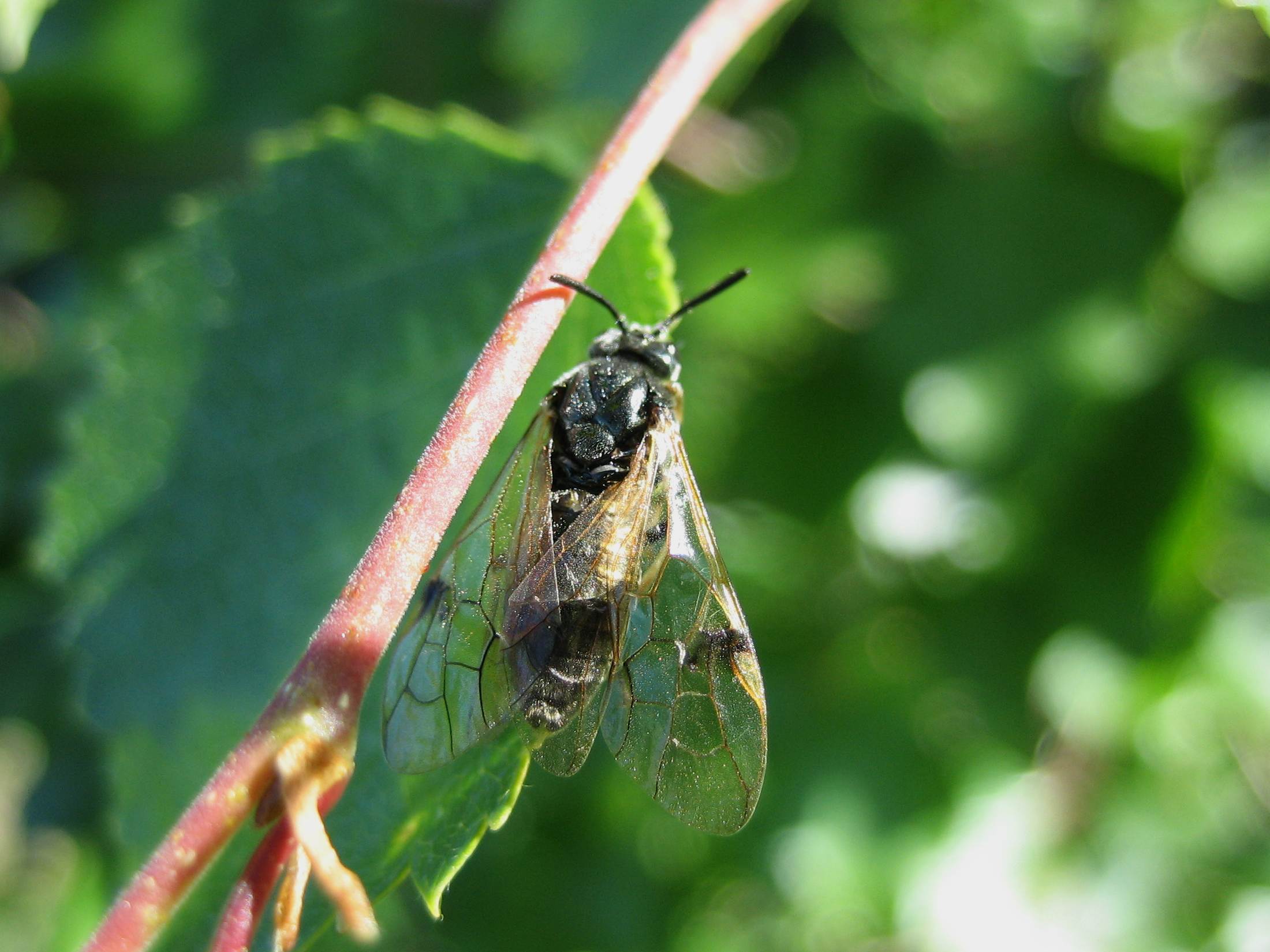 |
|
|
Unidentified Arge sp. sitting on Betula pubescens ssp. czerepanovii. |
||
|
Trichiosoma sp. (Hymenoptera: Cimbicidae) Several cimbicid sawfly species belonging to the genera Trichiosoma and Cimbex are associated with birches. These robust sawflies with clubbed antennae are fast and noisy fliers. During the day, their larvae rest in a coiled position on the underside of leaves. |
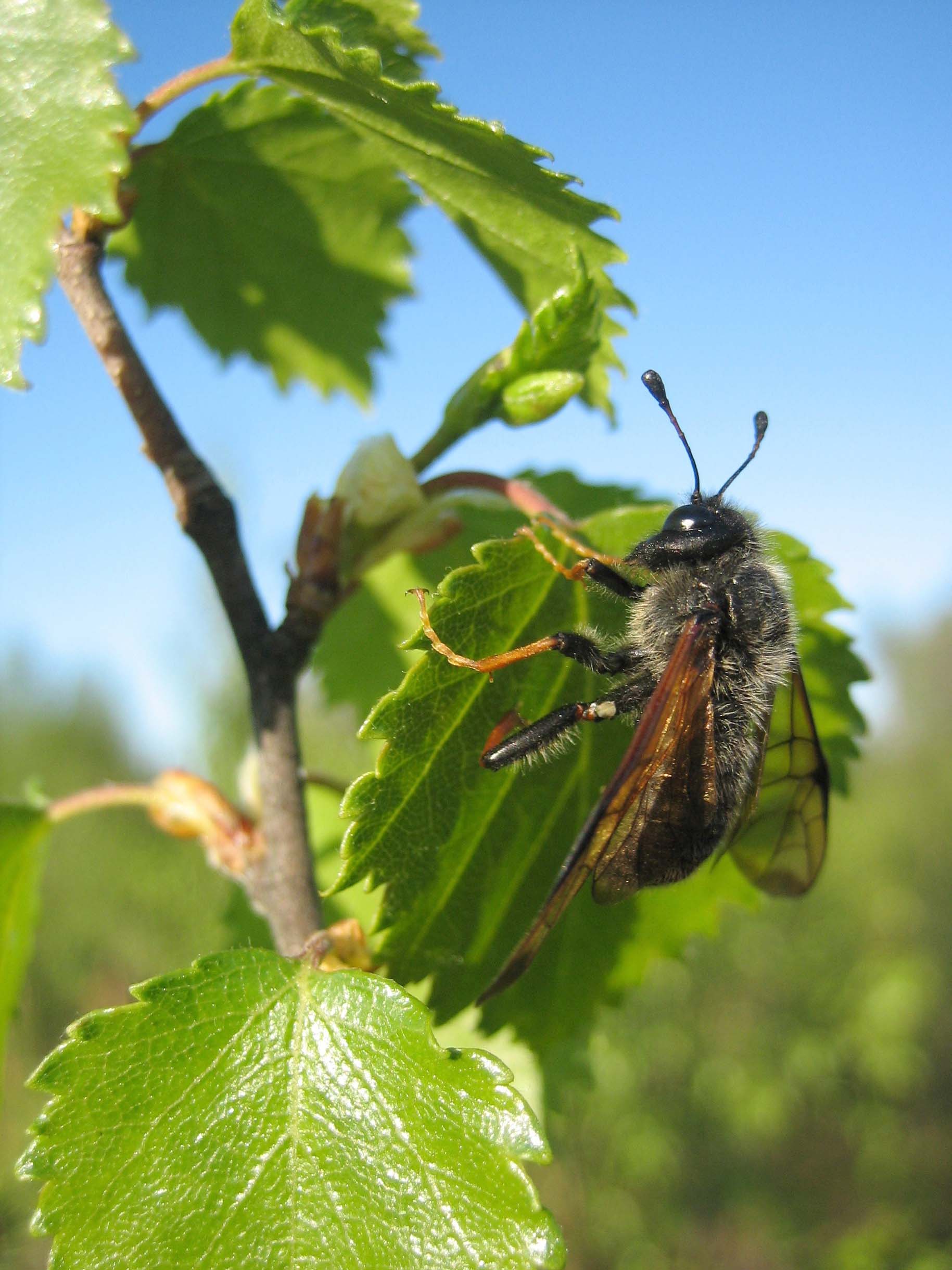 |
|
|
Trichiosoma sp. male resting on Betula pubescens. |
||
|
External-feeding Lepidoptera Below are just a just a couple of examples of geometrid moths, although there are many more butterfly and moth species that feed on birches. |
||
|
Operophtera fagata (Lepidoptera: Geometridae) This species sometimes occurs in outbreak proportions in Lapland. |
 |
|
|
Operophtera fagata larva feeding on mountain birch (Betula pubescens ssp. czerepanovii) during an outbreak in Utsjoki in 2005. |
||
|
Epirrita autumnata (Lepidoptera: Geometridae) Like the preceding species, this one sometimes occurs in masses in northern Lapland. In 2004, the mountain birch forests around the Kilpisjärvi Biological station were completely consumed. The outbreak lasted for two summers, but the birches made a remarkable recovery after the moth populations crashed in 2006. |
 |
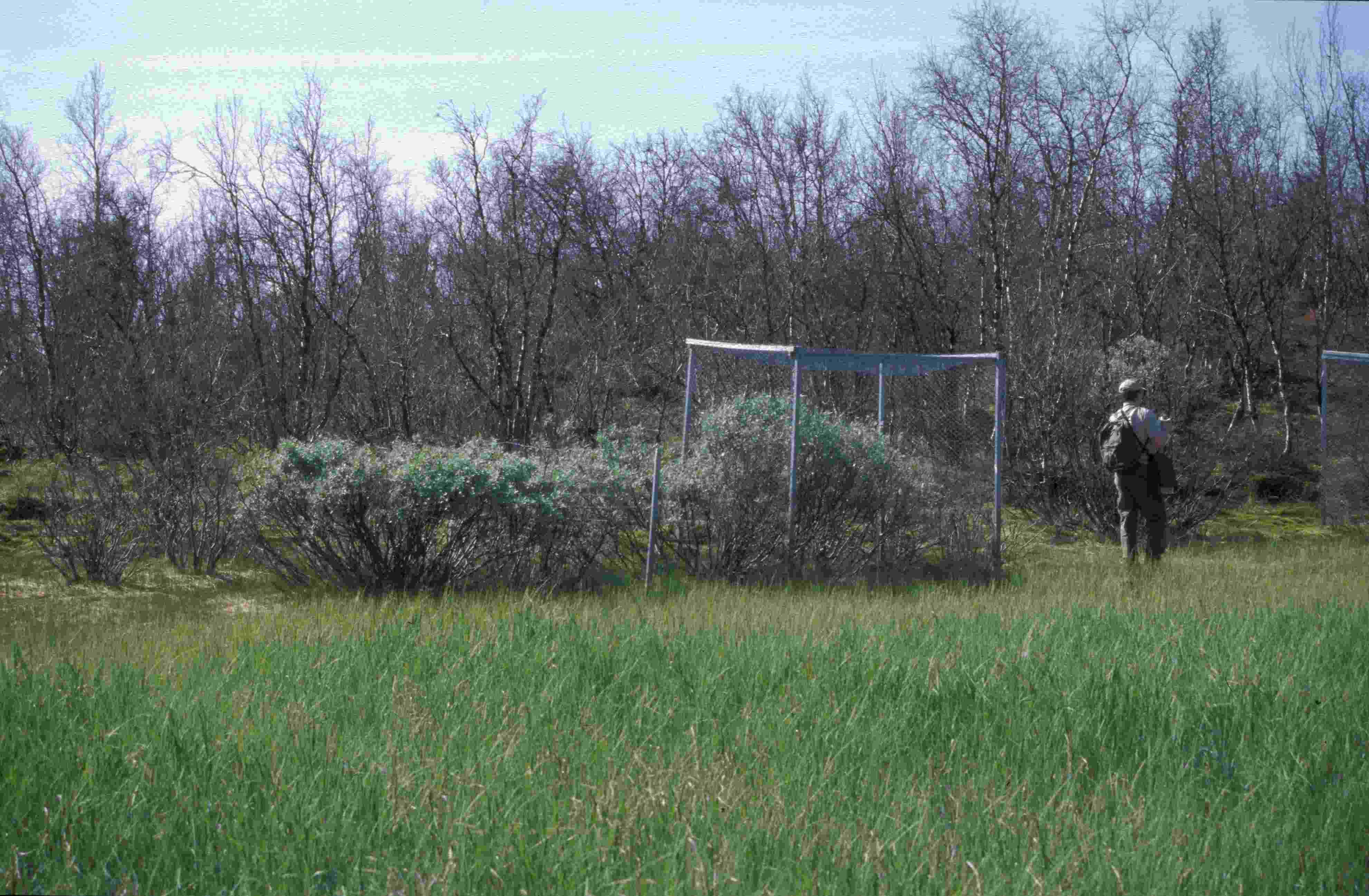 |
|
Drowned Epirrita autumnata larvae in a small pool of water during an outbreak in 2004. |
Damaged vegetation close to Kilpisjärvi during an Epirrita autumnata outbreak in 2004. The sedges and willows in the foreground have remained untouched because they grow in shallow water. |
|
|
|
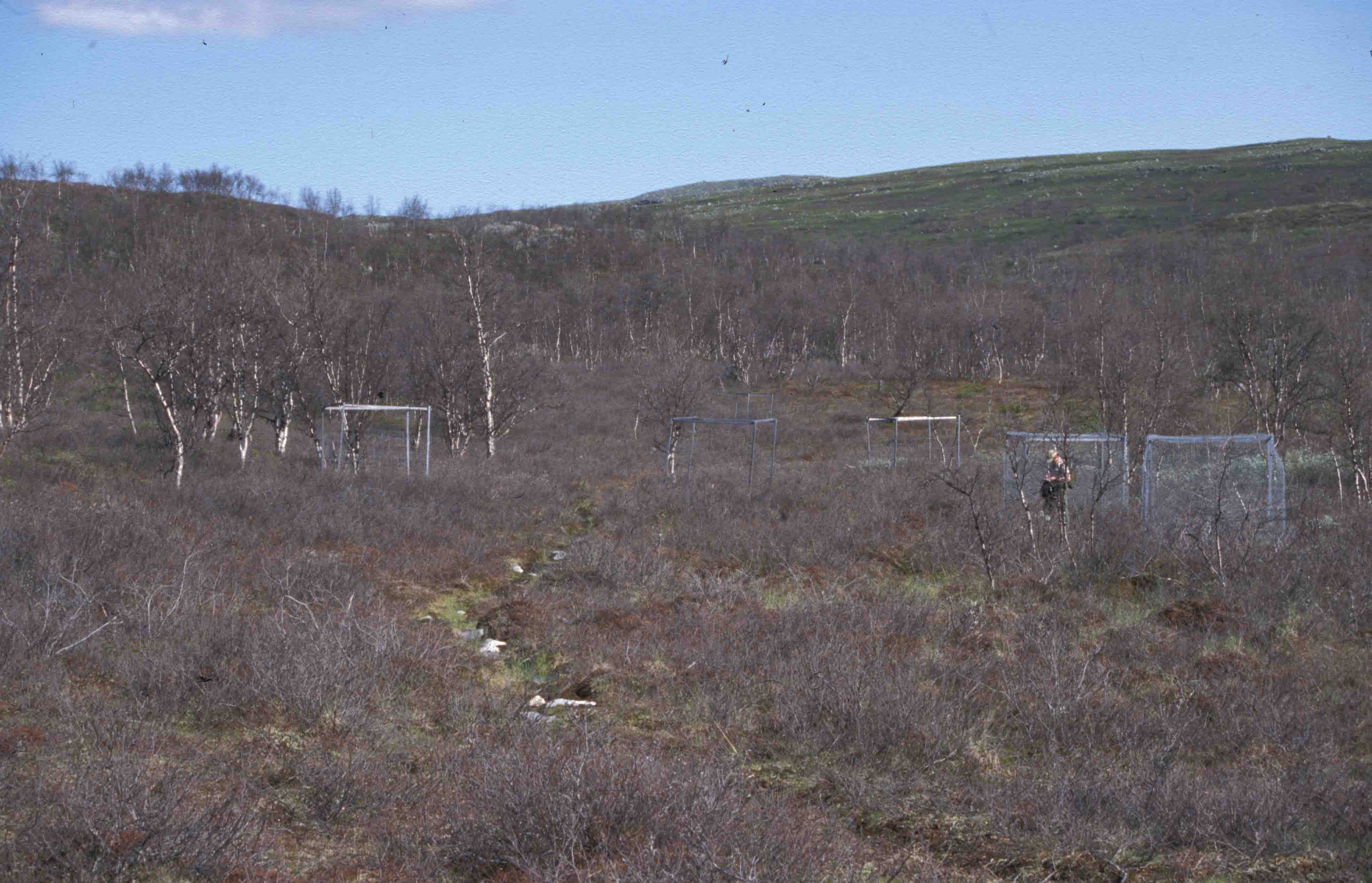 |
|
|
Consequences of an Operophtera autumnata outbreak in Kilpisjärvi in Finnish Lapland in August 2004. At his time of the year, the vegetation should be lush green. In addition to the mountain birch (Betula pubescens ssp. czerepanovii) forest, also the dwarf birch (Betula nana) thickets and willow (Salix spp.) bushes in the foreground have been consumed by the hungry larvae. The cages are part of a long-term scientific experiment (by Heikki Roininen, Risto Virtanen, et al.) to measure the effects of herbivores on willow growth patterns. |
||
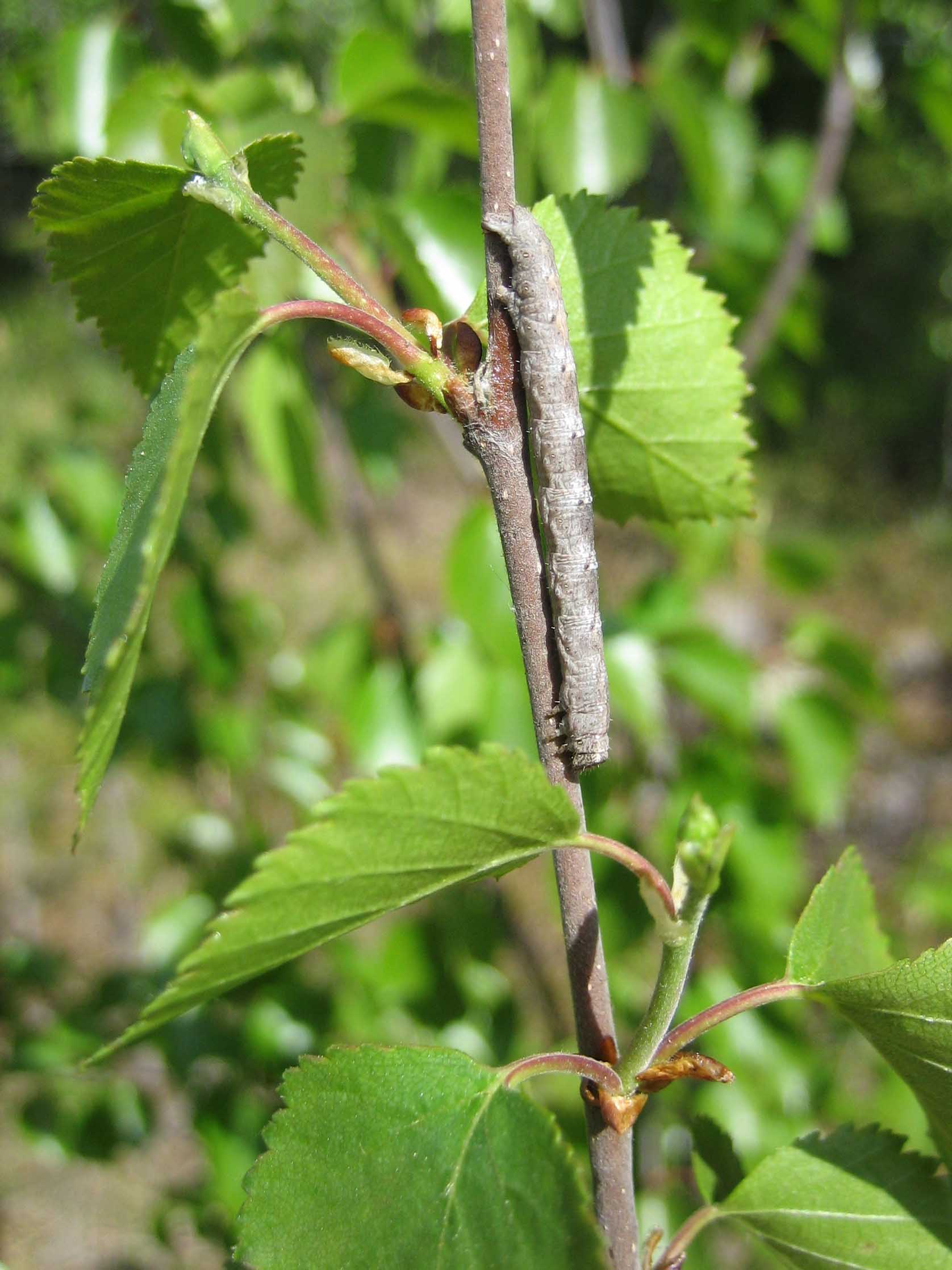 |
||
|
Unidentified geometrid larva hiding in plain sight on a Betula pubescens twig. |
||
|
Beetles (Coleoptera) |
||
|
Melolontha hippocastani (left) and Anomala dubia (right) (Coleoptera: Scarabaeidae) Larvae of these two large scarab beetles live underground and feed on plant roots, but the adults attack leaves of many tree species. |
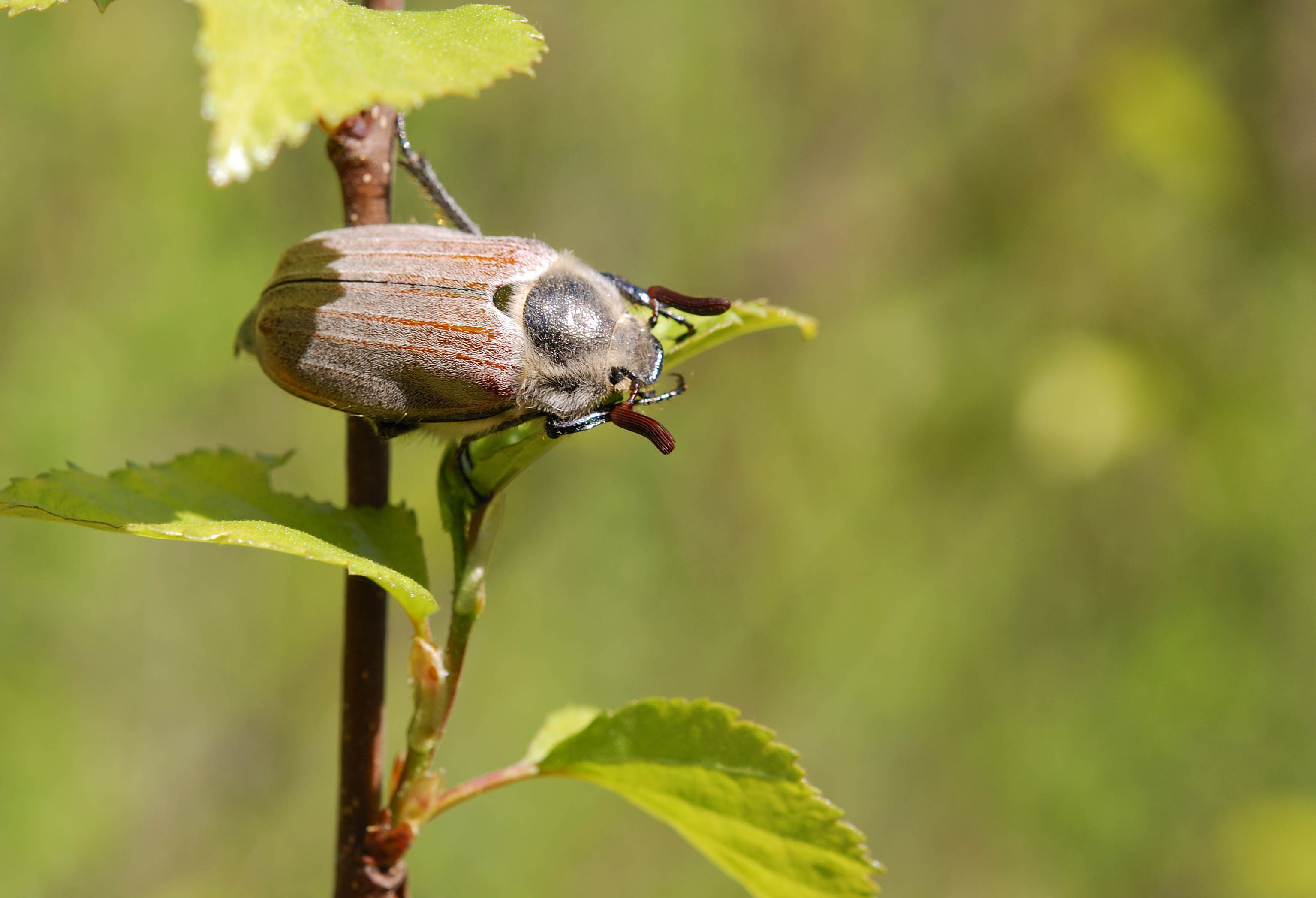 |
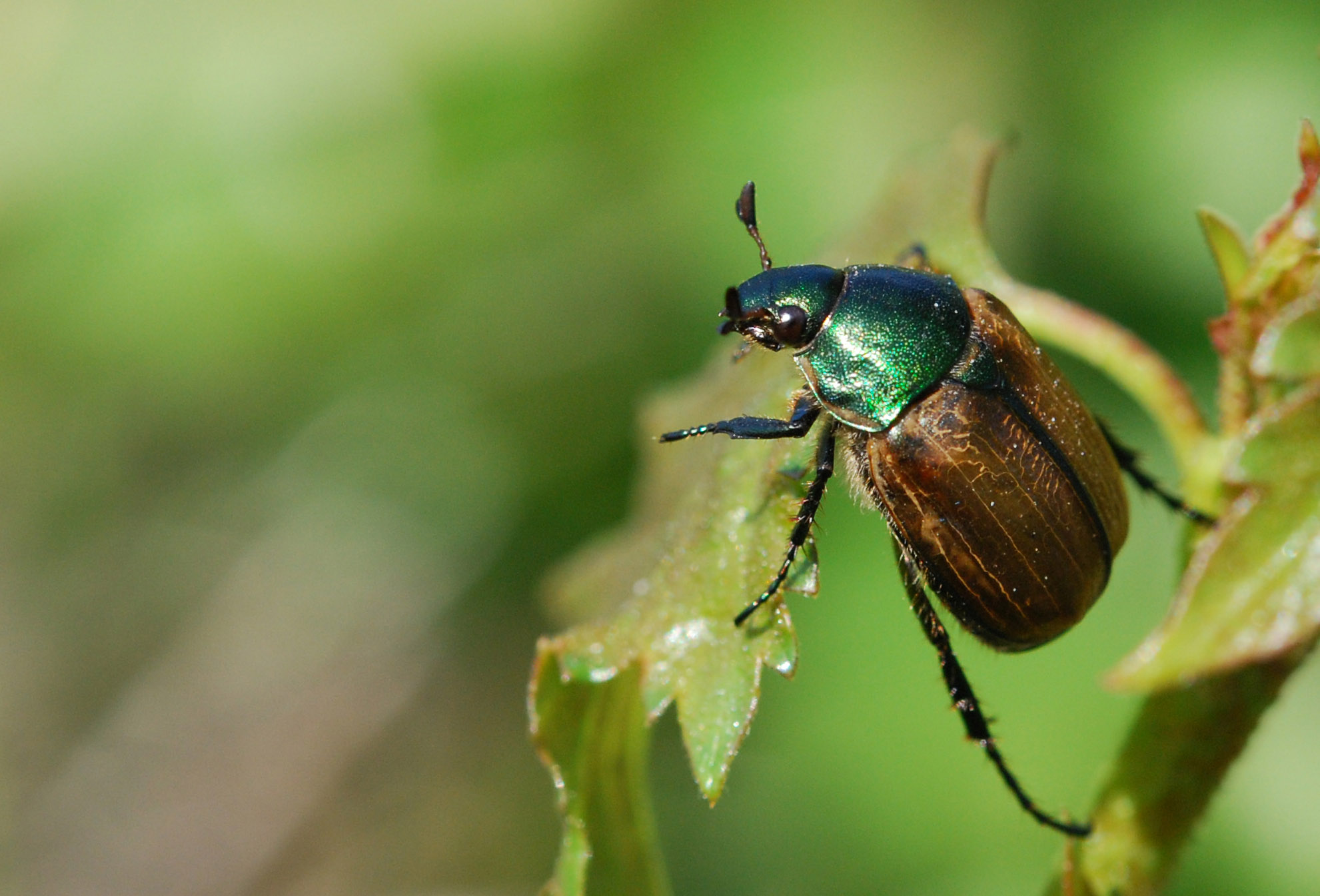 |
|
Melolontha hippocastani chewing on a birch leaf. |
Anomala dubia on Betula pendula. |
|
|
Agelastica alni (Coleoptera: Chrysomelidae) While larvae of this chrysomelid beetle are found exclusively on alders (Alnus spp.), the adults commonly feed on birches and even willows in the spring. |
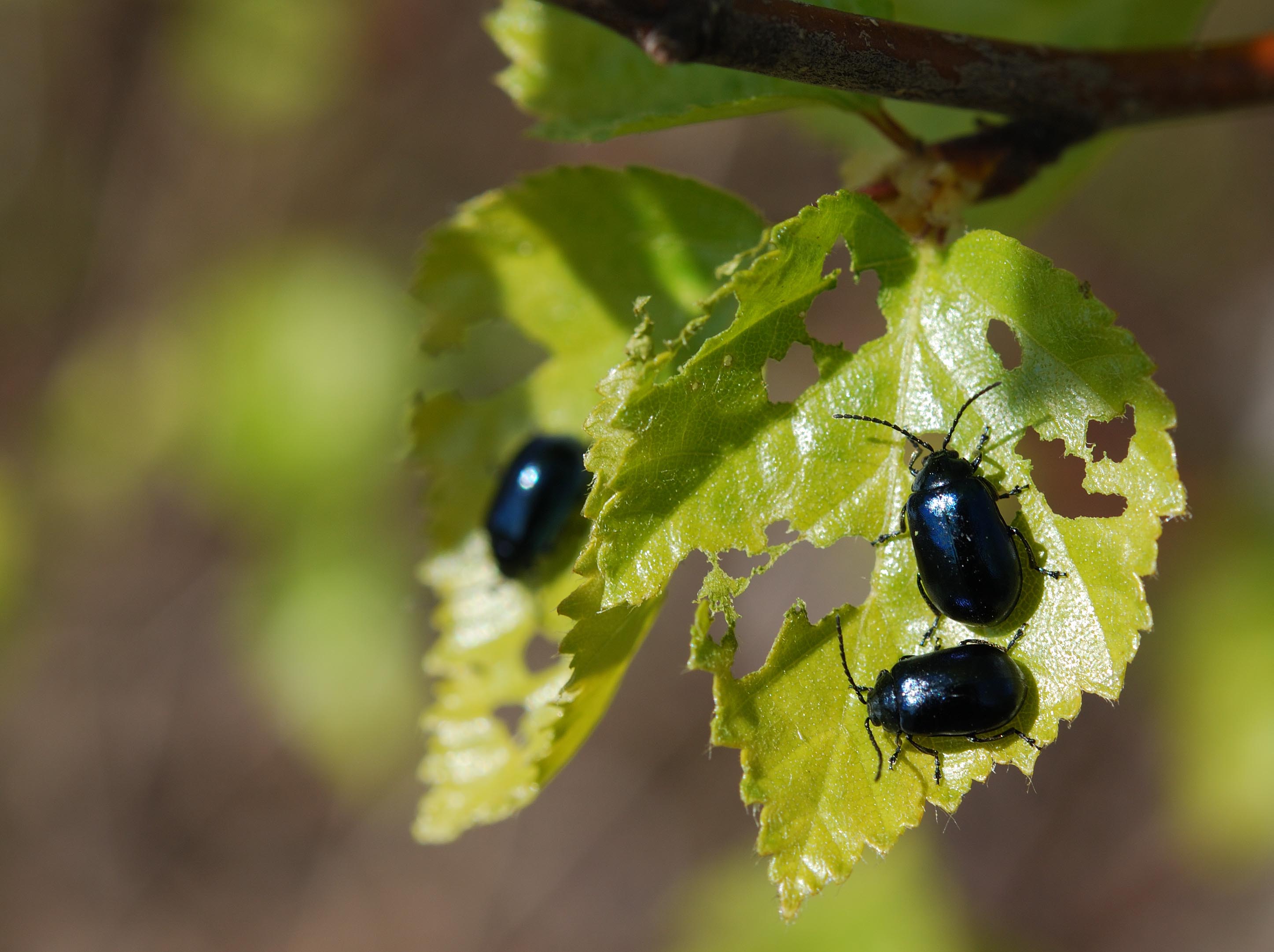 |
|
|
Agelastic alni individuals on birch. |
||
|
Phyllobius argentatus (Coleoptera: Curculionidae) This small shining green weevil occurs commonly on birches, although the species is a polyphage on many deciduous tree genera. Adults feed on leaves, but larvae feed on roots. |
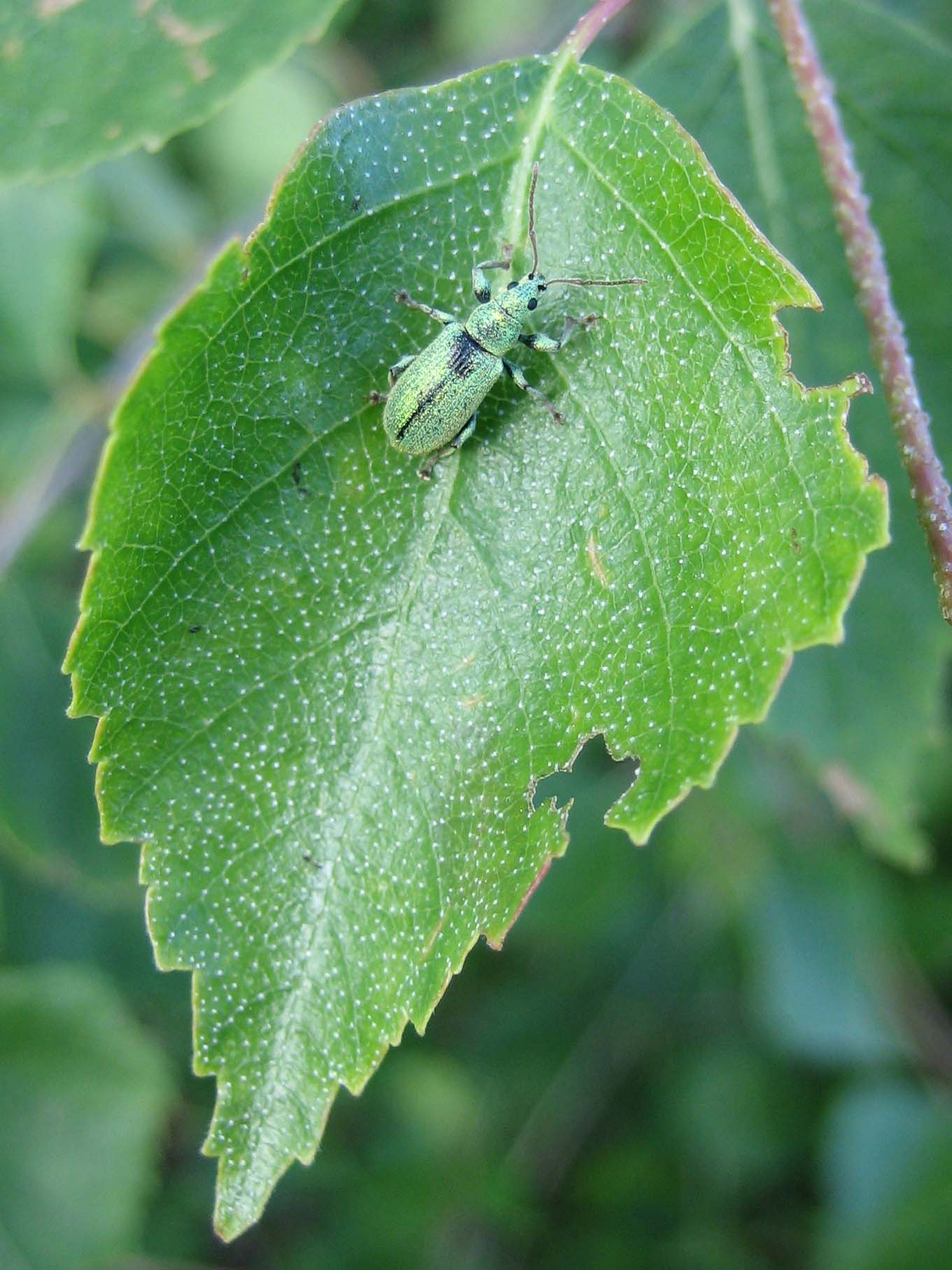 |
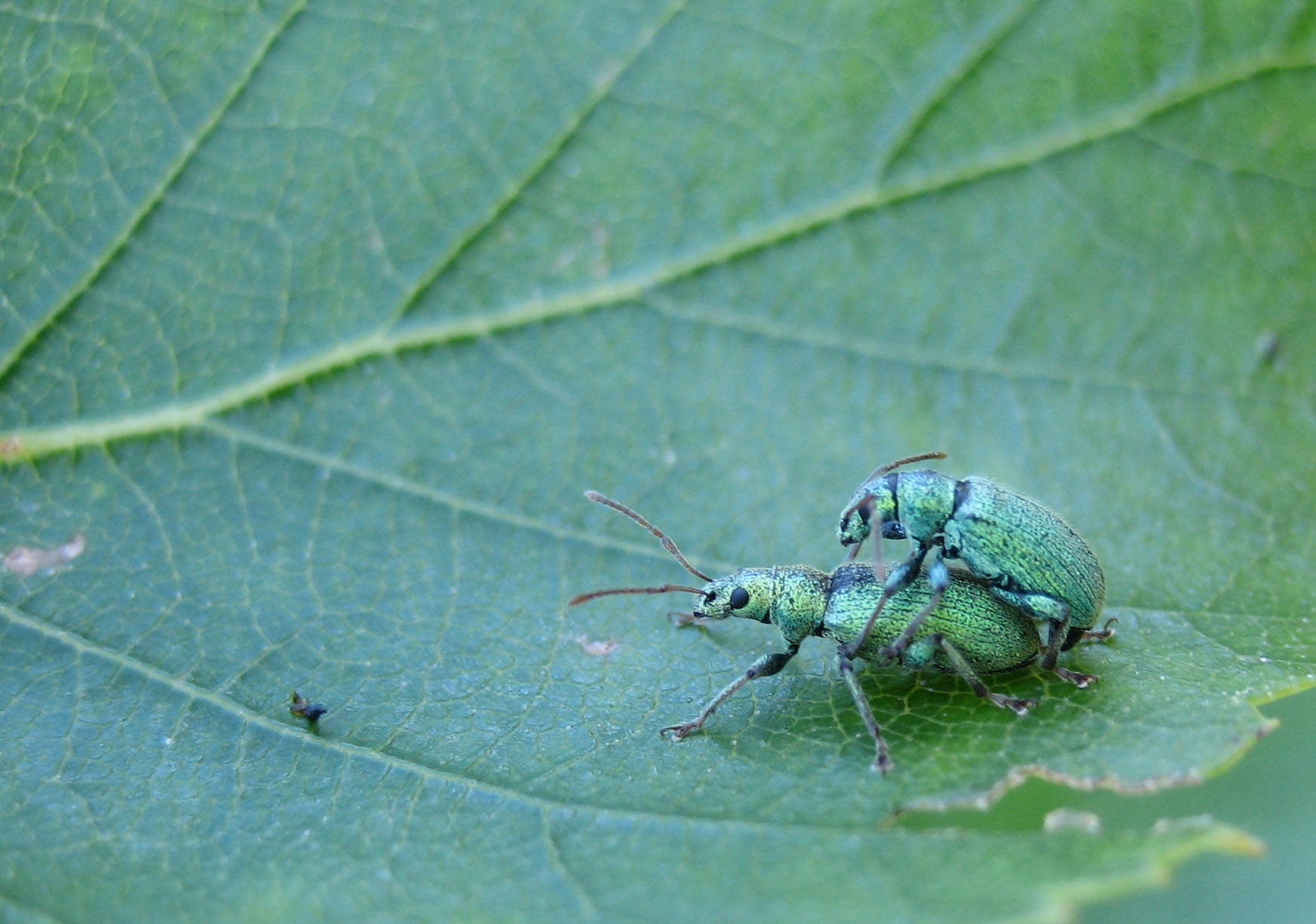 |
|
Phyllobius argentatus on Betula pendula. |
Mating pair of Phyllobius argentatus on a Betula pendula leaf. |
|